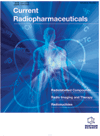
Full text loading...
We use cookies to track usage and preferences.I Understand
The lung is a moderately radio-sensitive organ. When cells are damaged due to accidental radiation exposure or treatment, they release molecules that lead to the recruitment of immune cells, accumulating inflammatory cytokines at the site of damage. Apigenin (Api) is a natural flavonoid known for its anti-inflammatory properties. In this study, we investigated the radioprotective properties of Api in the lung.
Thirty-six Wistar rats were randomly assigned to nine groups: control, radiation (Rad), CMC+Rad, Api10+Rad, and Api20+Rad. Api was administered with an intraperitoneal injection for 7 days, after which the rats were irradiated with 6 Gy whole-body X-ray. At 6 and 72 hours post-irradiation, the rats were euthanized, and their lung tissue was extracted.
Radiation led to increased alveolar wall thickness and the infiltration of macrophages and lymphocytes. Furthermore, the expression levels of inflammatory factors such as a nuclear factor of kappa light polypeptide gene enhancer in B-cells (NF-ĸB), Glycogen synthase kinase-3 beta (GSK-3β), transforming growth factor-beta1 (TGF-β1), and epigenetic factors including DNA methyltransferase 3a (DNMT3a) and Histone deacetylase 2 (HDAC2) were elevated in the lung tissue following radiation. Meanwhile, the expression level of IκB-α decreased. However, administration of Api (at both 10&20 mg/kg) reversed the adverse effects of radiation.
Api administration mitigated radiation-induced lung damage by reversing inflammatory and epigenetic changes.

Article metrics loading...

Full text loading...
References


Data & Media loading...

